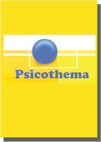Abstract
This study falls within research on schizotaxia, or neurocognitive risk markers of schizophrenia spectrum disorders, and its usefulness for early prevention strategies. Two samples of 60 adults and 65 children and adolescents, with some genetic or psychosocial high-risk individuals among them, were examined to compare the relationship between schizotypy dimensions and risk factors, and neurocognitive performance. One of the most practical aspects of this study was the proposal of a combined and straightforward measure of liability to schizophrenia spectrum disorders, in contrast to the current high availability of neurocognitive markers. For that purpose, several psychometric analyses were made exploring schizotypy dimensions, as well as 16 measures of cortical functions (executive, attentional, working memory and general cognitive functioning tasks) in adults and 20 measures in adolescents. In keeping with previous research, our results hypothetically indicate that the most accurate measure of schizotaxia combines negative traits of schizotypy, in the range of percentile 90 or higher in the Introvertive Anhedonia subscale of the O-LIFE or percentile 85 or higher in the Negative Schizotypy subscale of the MSTQ and, on the other hand, a score of 5 or higher in a combined neurocognitive deficit scale in adults and 6 or higher in adolescents (the number of measures exceeding the threshold of deficit of the distribution scores). Moreover, some other independent measures of clinical and social function, and follow-up studies, are necessary to confirm the predictive validity of this measure of schizotaxia.Downloads
Download data is not yet available.
